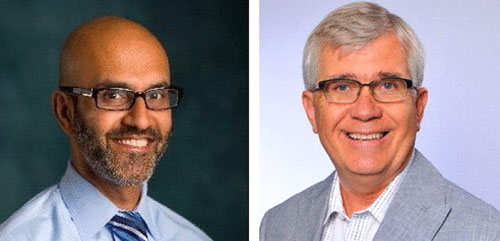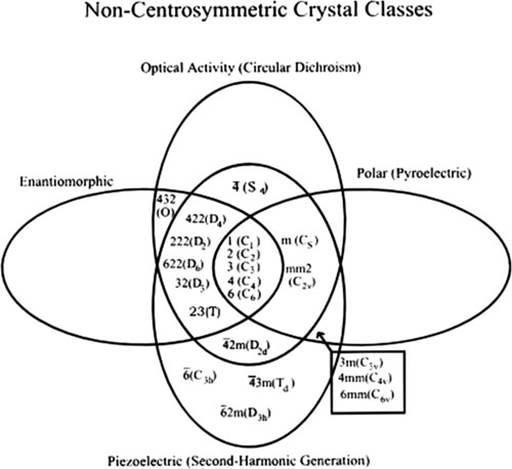Halasyamani and Poeppelmeier Paper Reaches 1,000 Citations; Named to Chemistry of Materials 1k Club
Foundational Review, “Noncentrosymmetric Oxides,” Published in 1998
The latest member of the Chemistry of Materials 1k Club – manuscripts with over a thousand citations – is a celebration of inorganic solid-state chemistry.

Figure 1. Photographs of (left) P. Shiv Halasyamani and (right) Kenneth R. Poeppelmeier for their 1k club contribution.
A foundational review “Noncentrosymmetric Oxides” by P. Shiv Halasyamani, now the Hugh Roy and Lillie Franz Cullen Distinguished Chair in the Department of Chemistry at University of Houston, and Kenneth R. Poeppelmeier, now the Charles E. and Emma H. Morrison Professor of Chemistry at Northwestern University (Figure 1), was published in 1998 as part of a Special Issue on the Frontiers in Inorganic Solid-State Chemistry. At the time, Halasyamani was a graduate student working with Poeppelmeier at Northwestern University’s Department of Chemistry and the Materials Research Center.
As the special issue highlighted, inorganic solid-state chemistry has always emphasized the relationships between the synthesis of new materials, their structure-property relationships, and the applications that emerge from the new knowledge. This review provided critical insight into the structure-property relationships of noncentrosymmetric oxides.
Using the Inorganic Crystal Structure Database (ICSD) from 1996, nearly 600 noncentrosymmetric oxides were categorized by the authors according to their symmetry-dependent property, crystal class, and cationic coordination environment.

Figure 2. Venn diagram that highlights the interrelationships of noncentrosymmetric crystal class in both Hermann-Mauguin and Schoenflies symbols. Reproduced with permission.
Figure 2 is a reproduction from the review that grouped these oxides into seven categories/crystal classes along with their symmetry-dependent properties. These properties included optical activity, i.e., circular dichroism, enantiomorphic, polar (pyroelectric), and piezoelectric/second-harmonic generation.
The review concludes by connecting back to the role of new material synthesis in inorganic solid-state chemistry, putting forward the question, “Based on this review can any strategies be put forward concerning the rational synthesis of new noncentrosymmetric oxides?”
Their database analysis showed that nearly 80% of the oxides studied either had a second-order Jahn–Teller distorted cation or tetrahedrally coordinated cation. Thus, they postulated that noncentrosymmetric oxides could be targeted by considering metal combinations susceptible to these two features.
Following the field forward to the present area, many new noncentrosymmetric materials have been identified with these features and enabled by advancing synthetic approaches for faster material discovery. This review, in many ways, was ahead of the times, for its impactful and creative use of a materials database to facilitate materials discovery and design.
Read More – Q&A with Kenneth R. Poeppelmeier
转自: https://www.uh.edu/nsm/chemistry/news-events/stories/2024/0617-1k-citations.php